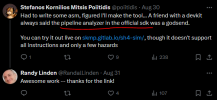xaeroxcore
Newcomer
I just wanna say i loved Soldier of Fortune, even with all and its flaws. And yes they released that port unpolished because from a bussiness point of view, there wasnt a good reason to keep investing on polish a game which is going to be released on a dead console anyway. Would you do it? But we all know there was room for improvement, because we all have seen way more complex games on DC running better. Same happened with HL, and even worst because they finally cancelled it.Just because newer libraries were available and assets weren't in the most optimal formats doesn't mean that the game wouldn't have shipped in the state that it was last leaked. NetherRealm and Rocksteady stuck with Unreal Engine 3 for much longer than most other developers, and Wukong just shipped on an outdated fork of UE5. It isn't all that uncommon. Maybe these things would have changed, but maybe not. We got a fair amount of PC to Dreamcast ports like Psycho Circus and Soldier of Fortune that clearly shipped in a less than optimal state.
Yes, but the version of UE 3 MK 11 uses is way improved....to the point it made MK 11 look way better than most UE 4 games. In fact, is there a 3D Fighter which looks better than MK 11 on PS4/One?Unreal Engine 4 was released to developers in 2012 and Mortal Kombat 11 shipped on UE3 in 2019. It's not uncommon to ship a game with outdated libraries.



